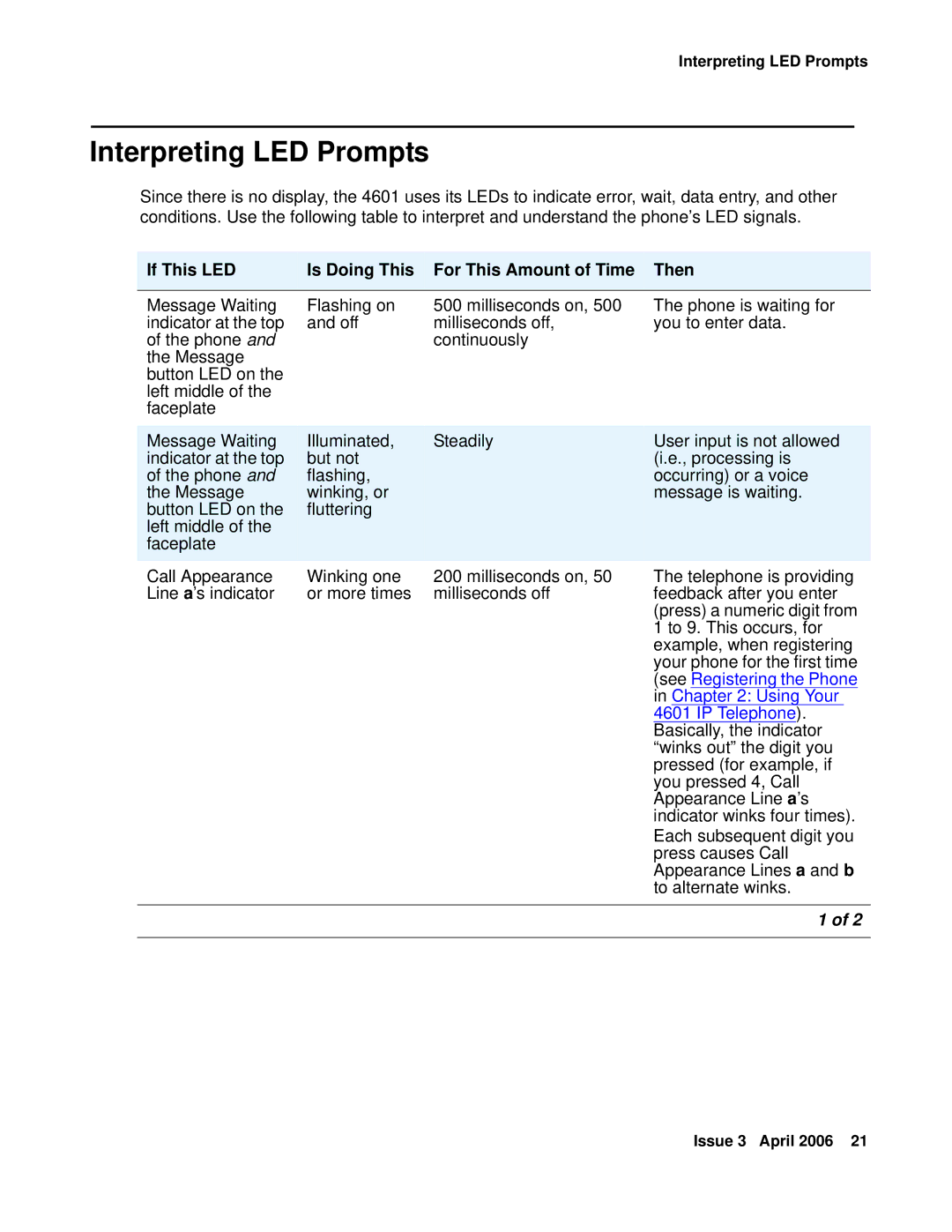
Interpreting LED Prompts
Interpreting LED Prompts
Since there is no display, the 4601 uses its LEDs to indicate error, wait, data entry, and other conditions. Use the following table to interpret and understand the phone’s LED signals.
If This LED | Is Doing This | For This Amount of Time | Then |
|
|
|
|
Message Waiting | Flashing on | 500 milliseconds on, 500 | The phone is waiting for |
indicator at the top | and off | milliseconds off, | you to enter data. |
of the phone and |
| continuously |
|
the Message |
|
|
|
button LED on the |
|
|
|
left middle of the |
|
|
|
faceplate |
|
|
|
|
|
|
|
Message Waiting | Illuminated, | Steadily | User input is not allowed |
indicator at the top | but not |
| (i.e., processing is |
of the phone and | flashing, |
| occurring) or a voice |
the Message | winking, or |
| message is waiting. |
button LED on the | fluttering |
|
|
left middle of the |
|
|
|
faceplate |
|
|
|
|
|
|
|
Call Appearance | Winking one | 200 milliseconds on, 50 |
Line a’s indicator | or more times | milliseconds off |
The telephone is providing feedback after you enter (press) a numeric digit from 1 to 9. This occurs, for example, when registering your phone for the first time (see Registering the Phone in Chapter 2: Using Your 4601 IP Telephone). Basically, the indicator “winks out” the digit you pressed (for example, if you pressed 4, Call Appearance Line a’s indicator winks four times). Each subsequent digit you press causes Call Appearance Lines a and b to alternate winks.
1 of 2
Issue 3 April 2006 21
